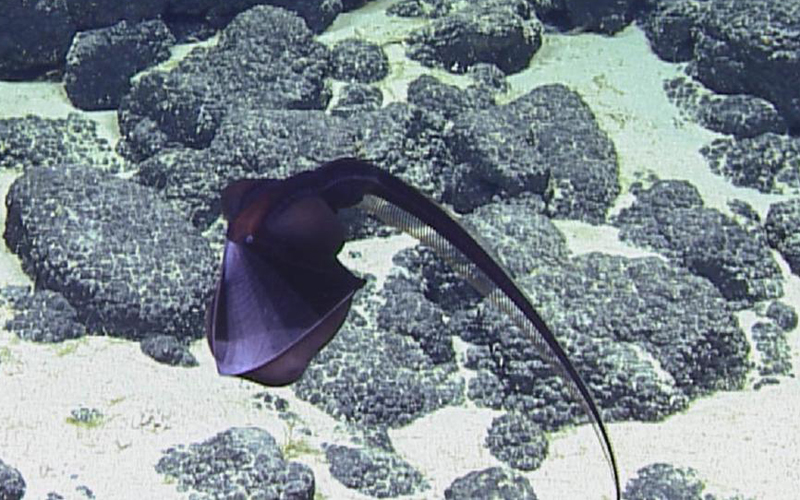Pelican eel
(Eurypharynx pelecanoides)

Classification
General data
The pelican eel (Eurypharynx pelecanoides) is a deep-sea eel. It is the only known member of the genus Eurypharynx and the family Eurypharyngidae.
The most notable feature is its large mouth, which is much larger than its body. The mouth is loosely hinged, and can be opened wide enough to swallow a fish much larger than the eel itself. The lower jaw is hinged at the base of the head, with no body mass behind it, making the head look disproportionately large. Its jaw is so large that it is estimated to be about a quarter of the total length of the eel itself.
While typically in a folded state, the mouth has the capacity to change to an inflated shape when hunting, giving the mouth its notably massive appearance. This transformation is possible due to the dual-mode biological morphing mechanism that takes place: geometric unfolding of the mouth followed by stretching. When the pelican eel is in pursuit of prey and opens its mouth, the head and jaw structure unfold and spread horizontally, This un-spreading event is followed by the inflation of the mouth. The inflation is made possible given the highly stretchable skin of the head, an additional characteristic that enables the eel to partake in this mechanism and engage in lunge feeding to consume large amounts of prey. When it feeds on prey, water that is ingested is expelled via the gills.
Pelican eels are smaller-sized eels. They grow to about 0.75 m (2.5 ft) in length, though lengths of 1m are plausible.











